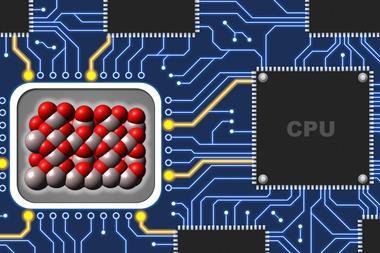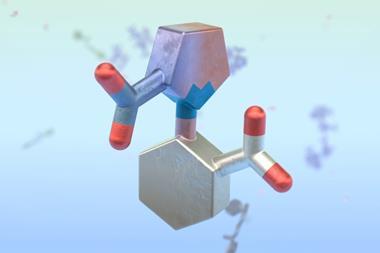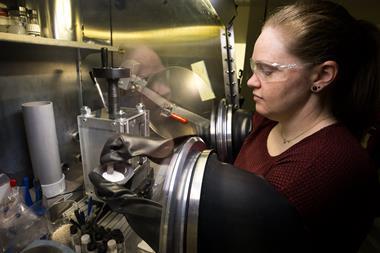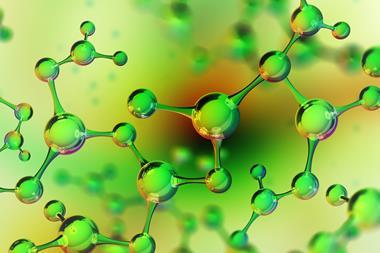A rundown of the various strategies scientists are exploring to cheat the Sabatier limit
Paul Sabatier, joint winner of the 1912 Nobel prize in chemistry, introduced a principle surrounding the ideal characteristics of a catalyst, specifically relating to how strongly it should bind reactants and products. In the Sabatier principle if reactants adsorb too weakly, the catalyst remains too far away from them and doesn’t get the chance to accelerate their transformation to products. If, once reactants become products they bind too tightly, they may stay on the catalyst and prevent further reactions happening there.
The Sabatier principle is therefore deceptively powerful. Usually, it defines how fast any catalyst system can hope to be. It reflects how chemists typically design catalysis systems, optimising structures and conditions for the best function. More recently, however, scientists have been exploring ways to cheat the Sabatier limit. Here’s how these approaches might work…
One strategy to exceed the threshold could be to design materials or processes that break fundamental scaling relations between how catalysts typically bind reactants and products. Ning Yan from the National University of Singapore explains that these scaling relations arise because reactants and products usually have very similar structures. As such they are both likely to bind to catalysts similarly tightly.
Plasmas, where high temperatures strip nuclei of some of their surrounding electrons to generate an electrically conductive gas of highly excited molecules, can circumvent scaling relations in reactions. One example of a process where plasma can help is in activating nitrogen. This makes the normally inert molecule somewhat more reactive when adsorbed on metals like cobalt and nickel that normally don’t work well as catalysts. However, the reaction acceleration is small, while plasmas use a great deal of energy and are also complicated to integrate into reaction processes.
Alternatively, layering materials with different atomic arrangements can cause permanent strain at the catalyst surface that affects its electronic structure. Putting mismatched lattice structures together in this way can also break scaling relations, removing the correlation between how tightly reactants and products adsorb. Applying a continuous electric or magnetic field to a material can also cause it to change shape, putting it under strain. Scientists have already applied this principle to electrocatalytic carbon dioxide reduction, the hydrogen evolution reaction and oxygen reduction.
Strain can build up differently in various directions in a structure, a property known as anisotropy. Because reactants and products are normally located separately in catalysts, anisotropic strain’s effect on these different locations can in theory help further break the scaling relation between them.
However, ‘in the past few decades many important reactions have reached stagnation with solely a focus on material design,’ says Paul Dauenhauer from the University of Minnesota in the US. Dauenhauer instead highlights the potential for ‘structure–function–perturbation’. This looks beyond optimising a static material and instead involves a dynamic way to control the reaction happening at the catalyst’s surface.
Dauenhauer and colleagues have therefore devised catalytic resonance theory, in which they propose catalysts that can oscillate back and forth between different surface electronic states. Dauenhauer’s team calls catalysts that oscillate in this way dynamic programmable catalysts. ‘We call it “programmable” because we use an external perturbation such as light, strain or charge that we completely control,’ Dauenhauer says. This can influence the reaction sequence that happens at the catalyst surface, changing which is the slowest, rate-limiting, step.
Electric fields and potentials provide a common way to make catalysts dynamically programmable. This approach differs from standard electrochemistry, where charge transfers to molecules to promote an electrochemical reaction. In dynamic catalysis, the field or potential does not simply act as a charge provider. Instead, it modifies the system energetically, for example by making it easier to remove electrons from the catalyst surface. Exploiting this ability with rapidly switching fields or potentials can alter the different rates of the steps in a reaction sequence.
Oscillating electronic states on a catalyst naturally result in ‘ratcheting mechanisms’ in almost all cases, Dauenhauer explains. ‘For a static reaction, the forward rate and reverse rate are describable by the kinetics of molecules traversing through the same transition state,’ he says. By contrast, for a reaction on a dynamic surface, all energy levels are changing. That includes the reactant, transition state, and product. As such, the forward and reverse catalytic rates also continually change. This means that the reverse reaction, where products revert to reactants, is much less likely. This approach has ‘immense potential for heterogeneous catalysis’ Dauenhauer says. ‘We can drive chemistry to desired compositions using programmable catalysts.’
So far, catalytic resonance theory, dynamic programmable catalysts and the resulting ratcheting mechanisms are yet to be fully demonstrated experimentally. However, Yan, Dauenhauer and other scientists have published results showing that dynamic control of catalysts is possible. These researchers are currently working to prove the approach’s predicted advantages and intend to publish results of these experiments in the next few years.

















No comments yet